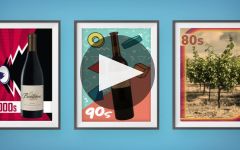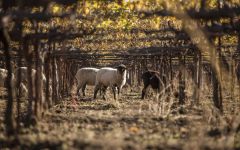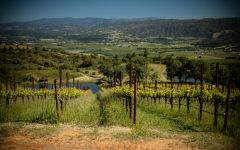Bonterra Organically Grown Merlot 2018
-
Wine
Enthusiast -
James
Suckling



Product Details
Your Rating
Somm Note
Winemaker Notes
#75 Wine Enthusiast Top 100 of 2020
The resulting wine has aromas of black currant, black cherries and a touch of wood smoke with flavors of plums, dark berries, toasty oak and vanilla spice. In the mouth, this wine has an elegant and restrained style with nice structure and balance, soft tannins and a long finish.
Organically grown
Professional Ratings
-
Wine Enthusiast
The black-fruit flavors in this full-bodied and moderately tannic wine go deep and broad, filling the palate with rich berries and black cherries. Hints of cocoa and dark chocolate add interest and complexity, too.
-
James Suckling
Aromas of spiced plum, licorice, black olive, savory meat and earth. It’s medium-bodied with smooth tannins and fresh acidity. Juicy finish. From organically grown grapes. Try from 2021.
Other Vintages
2020-
Wilfred
Wong
-
Tasting
Panel -
Wine
Enthusiast
-
Wine
Enthusiast -
Wilfred
Wong
-
Tasting
Panel
-
Wilfred
Wong
-
Wine
Enthusiast
-
Wine
Enthusiast
-
Wine
Enthusiast
-
Wine
Enthusiast
-
Wine
Spectator







Organically farmed and masterfully crafted, Bonterra Organic Vineyards epitomizes wines that are perfectly in tune with nature. A celebration of farm-fresh flavors, the portfolio features wines coaxed from the earth by careful farming practices carried out on a dynamic network of estate and partner farms throughout California. In addition to a widely available collection of organically farmed wines that includes Chardonnay, Sauvignon Blanc, Cabernet Sauvignon, Merlot, Equinox Red and Rosé, Bonterra crafts a trio of sought-after single-vineyard offerings from estate Biodynamic® vineyards in Mendocino County, and The Elysian Collection Merlot, an elevated offering from organic grapes.
Long before organic produce filled the shelves of neighborhood groceries, the dedicated team at Bonterra was committed to organic and Biodynamic® farming because they passionately believe that farms teeming with biodiversity—encompassing vines, insects and wildlife, and healthy soils—yield organic grapes leading to better wines. Whether supporting the health of honeybees with hive housing in its organic vineyards, trading tractors for sheep to maintain vineyards during the winter months, or giving back to the future of agriculture through educational outreach and shared knowledge, Bonterra strives to leave behind a legacy of thoughtful winegrowing inspired by the potential of nature itself.

Today the fourth most widely planted red variety in the state, Merlot has much to offer. While it bears similarities to Cabernet Sauvignon (its half-sibling), it tends to be lower in both acidity and tannins, giving Merlot wines a mouthfeel that is often perceived as soft, round and plush. These qualities make it an ideal blending partner for Cabernet, the two complementing each other throughout.
Merlot arrived relatively late to the California wine scene. It wasn’t until the 1970’s when producers like Louis Martini, Sterling and Matanzas Creek—influenced by European Merlot blends—began crafting single varietal versions. These trend-setting bottles opened the eyes of others in the California wine scene and spurred increased plantings. From there, the variety’s lush drinkability led to a surge in popularity, then overplanting (some of it on unsuitable sites) and finally a backlash that was turbo-charged by the infamous 2004 film, Sideways. What most viewers didn't realize was that, as much as Miles derided the variety, the prized wine of his collection—a 1961 Château Cheval Blanc—is made from a blend of Merlot with Cabernet Franc.
Fine examples of California Merlot—either as a single varietal wine or as part of a blend—can be found from Napa Valley, Sonoma County, the Central Coast and most regions around the state. Merlot wines offer a ripe, sensual mouthful of plummy fruit, suggestions of mint, herbs and vanilla, all carried along by an approachable structure and often, a great potential for improving with age.
